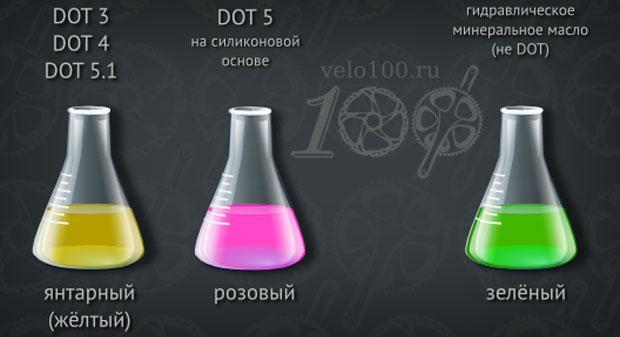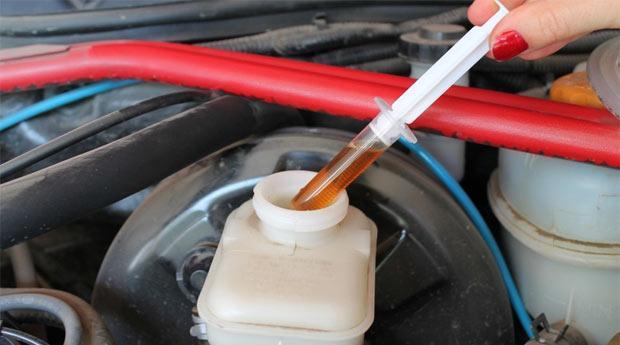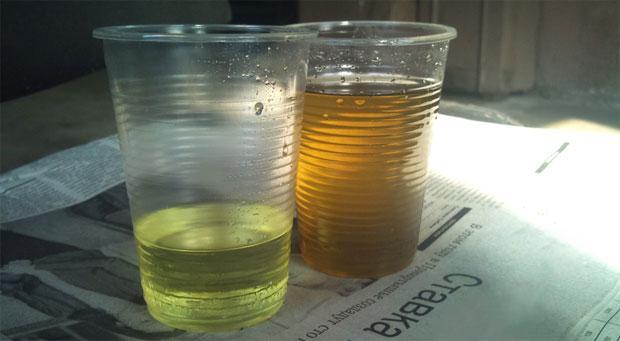
What color should the brake fluid be?
Content
Normal new brake fluid color
New glycol-based brake fluids DOT-3, DOT-4 and DOT-5.1 are clear or have a yellowish brown tint. And this color is not always natural. Glycol alcohols are colorless. Partly the liquids add a yellow tint to the additive, partly the dye affects.
DOT-5 and DOT-5.1/ABS brake fluids are usually red or pink in color. It is also not the natural color of silicones. Silicone-based fluids are specially tinted so that drivers do not confuse them and mix them with glycol. Mixing of glycol and silicone brake fluids is unacceptable. These products differ in both the bases and the additives used. Their interaction will lead to stratification into fractions and precipitation.


All brake fluids, regardless of the base and added dye, remain transparent. The presence of precipitation or a matte shade indicates pollution or chemical transformations that have occurred. In this case, it is impossible to pour such liquid into the tank. Also, with severe hypothermia, the liquid may acquire a slightly whitish hue and lose transparency. But after thawing, such changes in quality products are neutralized.
There is such a myth that after several freeze-thaw cycles, brake fluid can become unusable. This is not true. Additives and base are selected in such a way that even after repeated drops in temperature to below -40°C, their decomposition or degradation does not occur. After thawing, the liquid will completely restore its normal color and its working properties.
Glycols and silicones used in the manufacture of brake fluids are good solvents. Therefore, the additives in them do not fall into a visible precipitate even after a long period of inactivity without mixing. We found sediment at the bottom of the canister with brake fluid - do not fill it into the system. Most likely, it has expired, or it was originally of poor quality.


How to tell by the color that the brake fluid needs to be replaced?
There are several signs that, without special tools, will tell you that the brake fluid is aging and losing its working properties.
- Darkening without loss of transparency. Such a change in color is associated with the development of the base and additives, as well as with saturation with moisture. If the liquid only darkened, but did not lose some transparency, and there are no visible foreign inclusions in its volume, most likely it can still be used. It will be possible to find out more precisely only after analysis with a special device: a brake fluid tester, which will determine the percentage of water.
- Loss of transparency and the appearance of fine inclusions and heterogeneous sediments in the volume. This is a clear sign that the brake fluid has run out to the limit and will have to be changed. Even if the tester shows that the hydration is within the normal range, such a liquid must be replaced. Otherwise, problems may appear in the system, as a dark color and heterogeneous inclusions indicate wear of the additives.


Even if the brake fluid still seems normal in color, but its service life has exceeded 3 years for glycol bases and 5 years for silicone bases, you need to replace it in any case. During this period, even the highest quality options will be saturated with moisture and lose their lubricating and protective properties.
https://www.youtube.com/watch?v=2g4Nw7YLxCU
